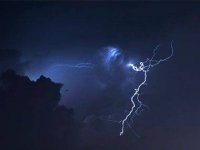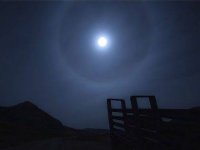J
Jeanh
Guest

Crickets can tell you the temperature
A chorus of chirps at night isn't just lovely atmosphere—it's a musical thermometer, too. Studies have shown that crickets regulate the rhythm of their chirps based on the temperature outside. According to the You do not have permission to view the full content of this post. Log in or register now., to convert Cricket to Fahrenheit, count the number of chirps you hear in 14 seconds, then add 40. (It's You do not have permission to view the full content of this post. Log in or register now..)

Storm heading your way? Count between the lighting and thunder
Light travels much faster than sound (186,291 miles per second versus 1,088 feet per second) and the difference between the two can give you a fair measure of distance. As soon as you see a flash of lighting, start counting the seconds until you hear the roar of thunder. Divide the number of seconds by five, and you’ll know how many miles away from you lightning just struck. Try this trick a few times in a row, and you'll know right away whether a storm is coming or going.

Birds fly higher in fair weather
Most birds possess what is called the Vitali organ, a special middle-ear receptor that senses extremely minute changes in air pressure. As atmospheric pressure falls before a storm, birds fly lower or huddle on telephone wires to escape the sudden pressure in their heads. If you see a flock flying high in the sky, chances are it’s nice weather, ahoy.

Halo around the moon? Storm's comin' soon
According to National Oceanic and Atmospheric Administration, there is You do not have permission to view the full content of this post. Log in or register now.to the old folk saying, "when a halo rings the moon or sun, rain's approaching on the run." A so-called halo forms around the moon when ice crystals from high-altitude cirrus clouds reflect and refract incoming light. Cirrus clouds don't bring rain, but they are a good indication that a low-pressure warm front is a few days away, often with a storm in tow.
Attachments
-
You do not have permission to view the full content of this post. Log in or register now.